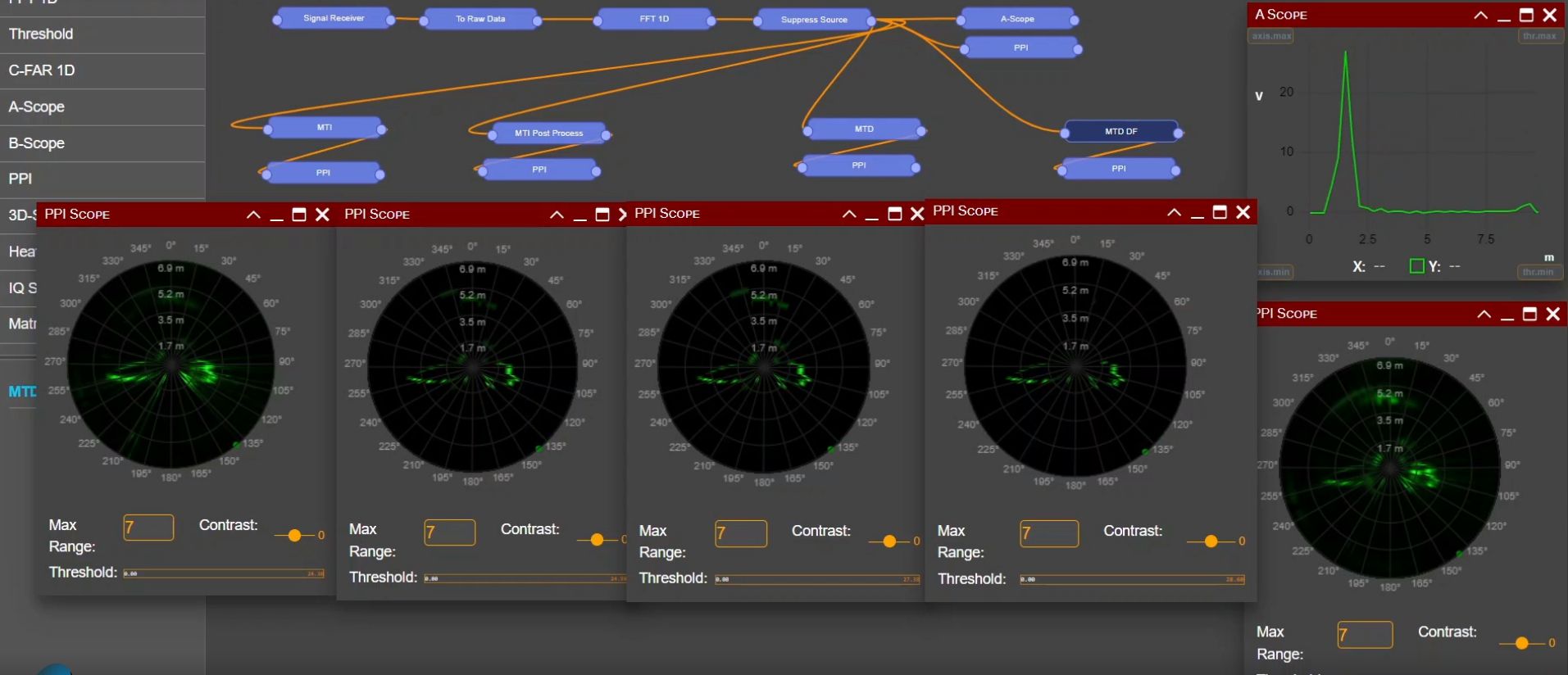FreeScopes ATC I provides algorithms needed in Air Traffic Control, in particular according to ICAO Doc 4444. It produces plots and tracks and gives various intelligent algorithms for movement detection and tracking.
It includes:
This module is mandatory for ATCO and ATSEP students. It makes the step from the theoretic understanding of the radar image to typical conventions on how target plots and tracks are displayed. The included features are a landmark in practical radar training helping to qualify on plots and tracks as needed for for ICAO 10057 oriented qualification.

FreeScopes has real access to the radar's live raw data. The variety of possible exercises is only limited by the creativity of the teacher. Here are some examples:
Plots are target reports that are created from the digital integration of received echoes within the antenna beamwidth.
A track is a target report that is created by a special tracking algorithm of a stream of radar-reported positions for a single target. Smoothed position and speed vector information are displayed.
Legal notice: this feature is used in civil aviation to provide conflict alert capability in ATC systems, or ‘marine radar’. In compliance with note 6A008.l.1 of (EU) 2023/66 of 21 October 2022 it is therefore not subject to the Dual Use Regulation.
To work around known shortcomings of MIT in real life scenarios, SkyRadar provides an enhanced implementation of the MTI, which we refer to as MTI PP – Moving Target Indication with Post Processing. The MTI PP expands the initial principle of the MTI technique. It employs two additional steps to omit a possible signal leakage, which could lead to a false positive detection.
As an enhanced version of the MTI, MTD is able to follow targets, even when they stop moving.
In the basic configuration, we provide a Moving Target Detection algorithm consisting of four sub-blocks:
The MTD-DF Moving Target Detector Doppler Filter incorporates an additional filter. The DF technique is implemented as a phase detector in order to make the filter more robust against possible complex background clutter environments. The main aim of this block is to detect the phase shifts from two consecutive pulses. These phase shifts are then compared with each other and in this case the filter serves as a plausibility method of the output signals from the MTI-PP. Two consecutive pulses which have a Doppler-frequency will not have a regular/expected phase shift in comparison with two consecutive pulses of stationary targets.
The Standing Person Recognition Algorithm – SPRA provides the capability to detect reflections coming from a standing target (person), which exists in a stationary environment.
Connected mobility, increased activities on the runways but also perimeter surveillance bring new challenges to close range radars.
The main idea of estimating the correct position and recognizing a standing person in different environments comes from the clutter map concept. Since a standing target is expected to be standing also after a whole radar sweep, the algorithm will store the environment information for a complete radar sweep and estimate the position of the standing person based on the stored background information. Thus, on the next radar sweep, simultaneously we will store the environment reflections, and estimate classified reflections of the motionless person.
SkyRadar's base unit is a close range training and research radar for indoor and outdoor experiments.
At the leading edge of security provision within its key markets, Cryptomathic closely supports its global customer base with many multinationals as longstanding clients.
SkyRadar develops innovative radar training solutions and simulation systems, empowering education, research & professional training in aviation and defense sectors.
All rights reserved by SkyRadar 2008 - 2026


SkyRadar Consortium
Email: sales@SkyRadar.com | Website: www.SkyRadar.com | © [2026] SkyRadar